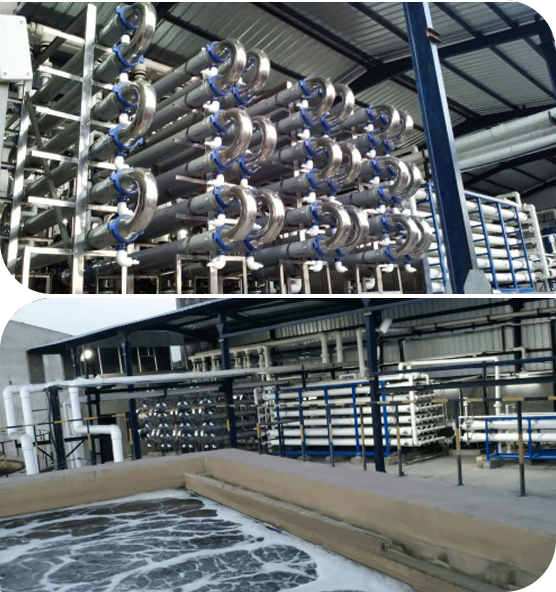
Waterman Engineers Australia is one of the major suppliers of Zero Liquid Discharge system. A ZLD system is really a remedy approach that's applied to get rid of every one of the liquid waste from a procedure. The intention of ZLD drinking water treatment method is to scale back wastewater economically and generate potable water that is fit for ordinary use. Zero discharge process is a sophisticated therapy process that comprises ultrafiltration, reverse osmosis, evaporation and fractional electro deionization. And we have been a effectively-recognized provider of ZLD techniques.
In several Industries, for instance electrical power, oil & gas, chemical compounds, mining and others, a large amount of wastewater is produced that has to be managed. Conventionally, this discharge of wastewater is completed via a plant outfall to your surface drinking water body like an evaporation pond, or sometimes deep well injected. These techniques result in quite a few environmental issues by the public in several locations of the entire world, as h2o is really a scarce supply and its administration should be monitored. These worries have resulted during the establishment of ZLD processes by a lot of industries to reduce their environmental footprint and enhance sustainability. And, Waterman Engineers Australia are greatest ZLD suppliers yow will discover for This technique.
Houses OF ZERO LIQUID DISCHARGE SYSTEM
The Qualities of a Zero Liquid Discharge technique can differ according to the distinct style and design and technology utilized. Even so, some widespread Houses of ZLD devices involve:
H2o Conservation: Considered one of the first aims of ZLD programs will be to conserve water by reducing the discharge of liquid squander to the setting.
Large Water Purity: ZLD systems are meant to deliver significant-good quality water that's free from impurities and contaminants, that makes them ideal for use in several industrial processes.
Versatility: ZLD devices are sometimes developed to support a broad number of input liquid streams, that makes them adaptable and suitable for use in several industries.
Superior Wastewater Treatment: Zero liquid discharge devices use Sophisticated wastewater procedure ways to take out impurities and contaminants through the effluent, producing substantial-quality drinking water.
Squander Reduction: ZLD systems support reduce waste by minimizing the quantity of liquid waste that needs to be disposed of and by making a concentrated, good waste materials that could be properly disposed of.
Power Effectiveness: ZLD devices can be Vitality-intensive due to superior Power needs of evaporation together with other wastewater treatment procedures. However, developments in engineering are generating Zero liquid discharge programs additional Zld System Manufacturer Zero Liquid Discharge System Electricity-successful and value-productive.
Waterman Engineers Australia manufactures Zero Liquid Discharge (ZLD) programs built to clear away all liquid waste, aiming to supply potable water and minimize environmental effects. Their ZLD units commonly include things like ultrafiltration, reverse osmosis, evaporation, and fractional electro deionization. Essential technologies used are Slipping Film Brine Concentrators, Compelled Circulation Crystallizer, and Some others, by using a two-stage process of pre-focus and evaporation/crystallization to Recuperate and reuse h2o. These programs are adaptable to various industries, emphasizing h2o conservation, substantial water purity, waste reduction, and energy performance. Technical technical specs are different and customizable, considering components like water supply, flow amount, and feed water good quality.
The necessity for Zero Liquid Discharge (ZLD) techniques occurs in the requirement to deal with environmental considerations connected to water scarcity and pollution. In industries like ability, oil & gas, and mining, extensive quantities of wastewater are generated. Typically, this wastewater is discharged into bodies of h2o, causing pollution and depleting clear h2o means. ZLD methods intention to reduce these impacts by managing and recycling wastewater within the industrial approach, therefore conserving h2o, lessening squander, and advertising sustainability.
When contemplating the complex requirements of the Zero Liquid Discharge (ZLD) process, vital aspects to concentrate on contain the water source it'll deal with, the program's movement charge, the quality of feed water, the levels of procedure associated, the Restoration fee of water, techniques for concentrate disposal, materials of design, running problems, and technique automation and Handle. These elements make sure the process's efficiency, sturdiness, and performance in dealing with and recycling industrial wastewater.
Zero Liquid Discharge (ZLD) plants give Added benefits for instance water conservation, squander reduction, and pollution avoidance, contributing to environmental sustainability. They're relevant in industries like electricity generation, oil and gasoline, chemicals, and mining, where by they help in running industrial wastewater properly, decreasing the ecological footprint, and complying with demanding environmental rules. These systems are critical in areas experiencing water scarcity and for industries aiming to boost their sustainability and operational performance.
FAQs for any Zero Liquid Discharge (ZLD) procedure usually tackle its operational principles, Value-success, upkeep necessities, environmental influence, applicability across several industries, and regulatory compliance. These questions aid buyers realize the process's benefits, technical needs, and suitability for their distinct wastewater administration requires.
one. Zero Liquid Discharge (ZLD) is really a wastewater remedy approach built to eliminate all liquid squander.
two. The procedure's factors are affected by the precise industrial system, wastewater composition, and regulatory requirements.
three. Effluent treatment crops take out pollutants from textile effluents to circumvent environmental contamination.
four. Strengths involve h2o conservation, pollution reduction, and regulatory compliance.
5. The goal is to attenuate environmental effects by recycling drinking water and minimizing waste.
six-nine. Effluent remedy plants are levels in wastewater cure: Principal (Bodily separation), secondary (biological procedure), and tertiary (State-of-the-art treatment method).
10. Device operations include filtration, sedimentation, Organic remedy, and disinfection.
eleven. Limiting parameters are elements that affect the cure's effectiveness, like pH and contaminant focus.
12. Structure things to consider contain flow amount, effluent composition, and wanted quality of dealt with water.